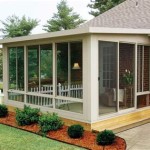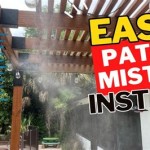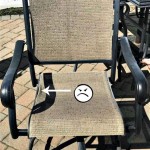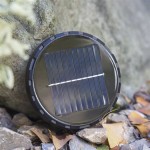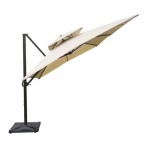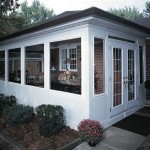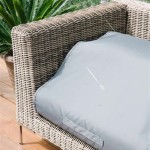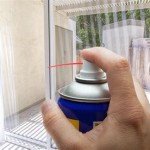Patio Design Ideas With Fire Pits: Creating Warm and Inviting Outdoor Spaces
The incorporation of a fire pit into patio design elevates the outdoor living experience, transforming a simple paved area into a focal point for relaxation, entertainment, and social gatherings. The visual appeal, warmth, and ambient lighting provided by a fire pit significantly enhance the usability of a patio throughout the year, extending its functionality beyond the warmer months. Thoughtful planning and execution are crucial to designing a patio that effectively integrates a fire pit while addressing safety considerations, aesthetic preferences, and practical needs.
The selection of a fire pit depends largely on individual requirements and the intended usage for the patio. Options range from portable, prefabricated fire pits that offer flexibility and ease of installation to custom-built structures that are seamlessly integrated into the overall patio design. Each type presents its own set of advantages and disadvantages in terms of cost, aesthetics, and functionality. Material choices, such as brick, stone, concrete, and metal, further contribute to the overall aesthetic and durability of the fire pit.
Effective patio design with a fire pit extends beyond the selection of the fire pit itself. Strategic placement, coupled with appropriate seating arrangements, landscaping elements, and lighting, are essential for creating a cohesive and functional outdoor space. Consideration must be given to wind direction, proximity to structures and vegetation, and local regulations regarding open fires. The goal is to create an aesthetically pleasing and safe environment that maximizes the enjoyment and utility of the patio.
Key Considerations for Fire Pit Placement and Safety
The placement of a fire pit is paramount for ensuring both safety and optimal utilization of the patio space. The first consideration should be adherence to local fire codes and regulations, which often specify minimum distances between the fire pit and structures, vegetation, and property lines. These regulations are in place to prevent accidental fires and ensure the safety of occupants and neighboring properties. Contacting the local fire department or building code enforcement office is advisable to obtain specific requirements and guidelines.
Beyond legal requirements, practical considerations play a significant role in determining the ideal placement. Wind direction is a crucial factor, as prevailing winds can carry smoke and embers towards seating areas, structures, or flammable materials. Positioning the fire pit in a location that minimizes the impact of wind is essential for creating a comfortable and safe environment. Shielding the fire pit with natural barriers, such as strategically placed shrubs or trees, can help deflect wind and reduce the risk of flying embers. However, ensuring adequate clearance from vegetation to prevent ignition is also critical.
Proximity to seating areas is another important aspect of fire pit placement. The fire pit should be positioned in a central location that allows for comfortable seating arrangements around it. A circular or semi-circular seating arrangement is often preferred, as it promotes conversation and creates a sense of intimacy. The distance between the fire pit and the seating should be carefully considered to ensure that occupants are close enough to feel the warmth of the fire but far enough away to avoid excessive heat or discomfort. A minimum distance of several feet is generally recommended.
Surface materials surrounding the fire pit require careful selection to prevent fire hazards and ensure durability. Combustible materials, such as wood decking or mulch, should be avoided within a certain radius of the fire pit. Non-combustible materials, such as concrete pavers, stone, or gravel, are ideal for creating a safety zone around the fire pit. These materials can withstand high temperatures and prevent the spread of fire. The size of the safety zone should be determined based on the size of the fire pit and the potential for embers to escape. A wider safety zone is recommended for larger fire pits or in areas with high winds.
Finally, accessibility to fire extinguishing equipment is a critical safety consideration. A readily available water source, such as a garden hose, and a fire extinguisher should be kept nearby in case of emergencies. Occupants should be familiar with the operation of the fire extinguisher and understand the procedures for extinguishing a fire safely. Regular inspection and maintenance of the fire pit and surrounding area are also essential for preventing potential hazards. Removing debris, such as leaves and twigs, can reduce the risk of fire ignition. Ensuring that the fire pit is in good working order and that any necessary repairs are made promptly is also crucial for safety.
Choosing the Right Fire Pit Type and Materials
Selecting the appropriate type of fire pit is a pivotal decision that impacts the functionality, aesthetics, and overall cost of the patio design. Fire pits can be broadly categorized into two main types: prefabricated and custom-built. Prefabricated fire pits are typically portable and readily available from retailers, offering convenience and ease of installation. These fire pits come in a variety of styles, sizes, and materials, allowing for flexibility in design and budget. Custom-built fire pits, on the other hand, are designed and constructed specifically for the patio, offering a higher degree of customization and integration with the surrounding landscape. Custom fire pits can be built from a variety of materials, such as brick, stone, concrete, and metal, and can be tailored to match the architectural style of the home.
The choice between a prefabricated and custom-built fire pit depends on individual preferences, budget constraints, and the desired level of customization. Prefabricated fire pits are a cost-effective option for those seeking a quick and easy solution. These fire pits are typically less expensive than custom-built structures and can be easily moved or replaced as needed. However, prefabricated fire pits may lack the unique aesthetic appeal and seamless integration of custom-built designs. Custom-built fire pits, while more expensive, offer the opportunity to create a truly unique and personalized outdoor space. These fire pits can be designed to blend seamlessly with the existing landscape and architectural style, creating a cohesive and visually appealing outdoor environment.
The fuel source for the fire pit is another important consideration. Fire pits can be fueled by wood, propane, or natural gas, each offering its own set of advantages and disadvantages. Wood-burning fire pits provide a traditional and authentic fire experience, creating a crackling sound and inviting aroma. However, wood-burning fire pits also produce smoke and require a readily available supply of firewood. Propane fire pits offer a clean and convenient alternative to wood-burning fire pits. These fire pits are easy to light and control, and they produce less smoke and ash. However, propane fire pits require a propane tank, which can be unsightly and require periodic refills. Natural gas fire pits offer the ultimate in convenience and cleanliness. These fire pits are connected to a natural gas line, providing a constant and reliable fuel source. Natural gas fire pits produce virtually no smoke or ash, and they can be easily turned on and off with the flip of a switch. However, natural gas fire pits require professional installation and may not be suitable for all locations.
The materials used to construct the fire pit play a significant role in its durability, aesthetics, and safety. Brick, stone, and concrete are popular choices for building custom fire pits, offering a durable and fire-resistant construction. These materials can be used to create a variety of designs, from rustic and traditional to modern and contemporary. Metal fire pits, typically made of steel or copper, offer a sleek and modern aesthetic. Metal fire pits are lightweight and durable, and they can be easily moved or transported. However, metal fire pits can become hot to the touch during use, requiring caution when handling. Regardless of the materials chosen, it is essential to ensure that they are fire-resistant and appropriate for outdoor use.
Consider the long-term maintenance requirements of the fire pit when selecting materials. Some materials, such as stone and concrete, may require periodic sealing to protect them from the elements. Metal fire pits may require rust prevention treatments to maintain their appearance and prevent corrosion. Regular cleaning and inspection of the fire pit are also essential for ensuring its safety and longevity. By carefully considering the type of fire pit, fuel source, and construction materials, one can create a safe, functional, and aesthetically pleasing outdoor space that will provide years of enjoyment.
Integrating Landscaping and Lighting for Ambiance
The integration of landscaping and lighting plays a crucial role in creating a cohesive and inviting patio design with a fire pit. These elements contribute significantly to the ambiance, enhancing the overall aesthetic appeal and extending the usability of the outdoor space. Careful planning and execution are essential for creating a harmonious balance between the fire pit, surrounding landscape, and lighting scheme.
Landscaping can be used to define the space around the fire pit, create privacy, and enhance the natural beauty of the outdoor environment. Strategic placement of plants, shrubs, and trees can create a sense of enclosure and intimacy, transforming the patio into a secluded retreat. Low-maintenance plants that are tolerant of heat and drought are ideal for planting near the fire pit. Ornamental grasses, succulents, and drought-tolerant shrubs can add texture and visual interest to the landscape without requiring excessive watering or maintenance.
Consider the scale and proportion of the plants in relation to the fire pit and surrounding patio area. Tall trees or shrubs can provide shade during the day and create a dramatic backdrop for the fire pit at night. Low-growing ground covers can soften the edges of the patio and create a seamless transition between the paved area and the surrounding landscape. Avoid planting flammable materials, such as pine needles or dry leaves, near the fire pit to reduce the risk of fire hazards. Mulching the planting beds with non-combustible materials, such as gravel or stone, can also help prevent the spread of fire.
Lighting is an essential element for creating ambiance and enhancing the usability of the patio at night. A well-designed lighting scheme can transform the patio into a warm and inviting space, extending its functionality beyond daylight hours. Consider incorporating a variety of lighting sources, such as ambient lighting, task lighting, and accent lighting, to create a layered and dynamic effect.
Ambient lighting provides general illumination for the patio area. String lights, lanterns, and post lights can be used to create a soft and inviting glow. Task lighting provides focused illumination for specific areas, such as seating areas or outdoor kitchens. Under-cabinet lighting, spotlights, and path lights can be used to enhance visibility and safety. Accent lighting is used to highlight specific features, such as plants, sculptures, or architectural details. Uplighting trees or shrubs can create a dramatic effect, casting shadows and adding depth to the landscape.
Consider the color temperature of the lights when designing the lighting scheme. Warm-toned lights, with a color temperature around 2700-3000 Kelvin, create a cozy and inviting atmosphere. Cool-toned lights, with a color temperature above 4000 Kelvin, provide brighter and more focused illumination. Use dimmer switches to adjust the intensity of the lights and create different moods. String lights with dimmers can be adjusted to create a romantic and intimate atmosphere, while brighter lights can be used for entertaining or outdoor activities. Ensure that all outdoor lighting fixtures are weatherproof and designed for outdoor use.

Outdoor Fire Pit Design Ideas Landscaping Network

12 Best Outdoor Fire Pit Ideas Diy Backyard

395 Sq Ft Rectangle Patio Design With Circle Fire Pit Area Mypatiodesign Com

Best Fire Pit Ideas Heated Backyard Retreat Designs Natural Brick Stone

21 Best Backyard Fire Pit Ideas Stylish Outdoor Pits

Diy Square Patio Design With Fire Pit Download Plan Mypatiodesign Com
40 Backyard Fire Pit Ideas Renoguide N Renovation And Inspiration

12 Best Outdoor Fire Pit Ideas Diy Backyard

57 Creative Fire Pit Ideas For Your Backyard Designs Patio
:strip_icc()/101485341-5099849194654a31be884d4b119be6bc.jpg?strip=all)
These 10 Firepit Seating Ideas Will Make Your Outdoor Space Cozy
See Also

